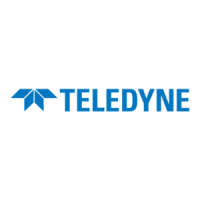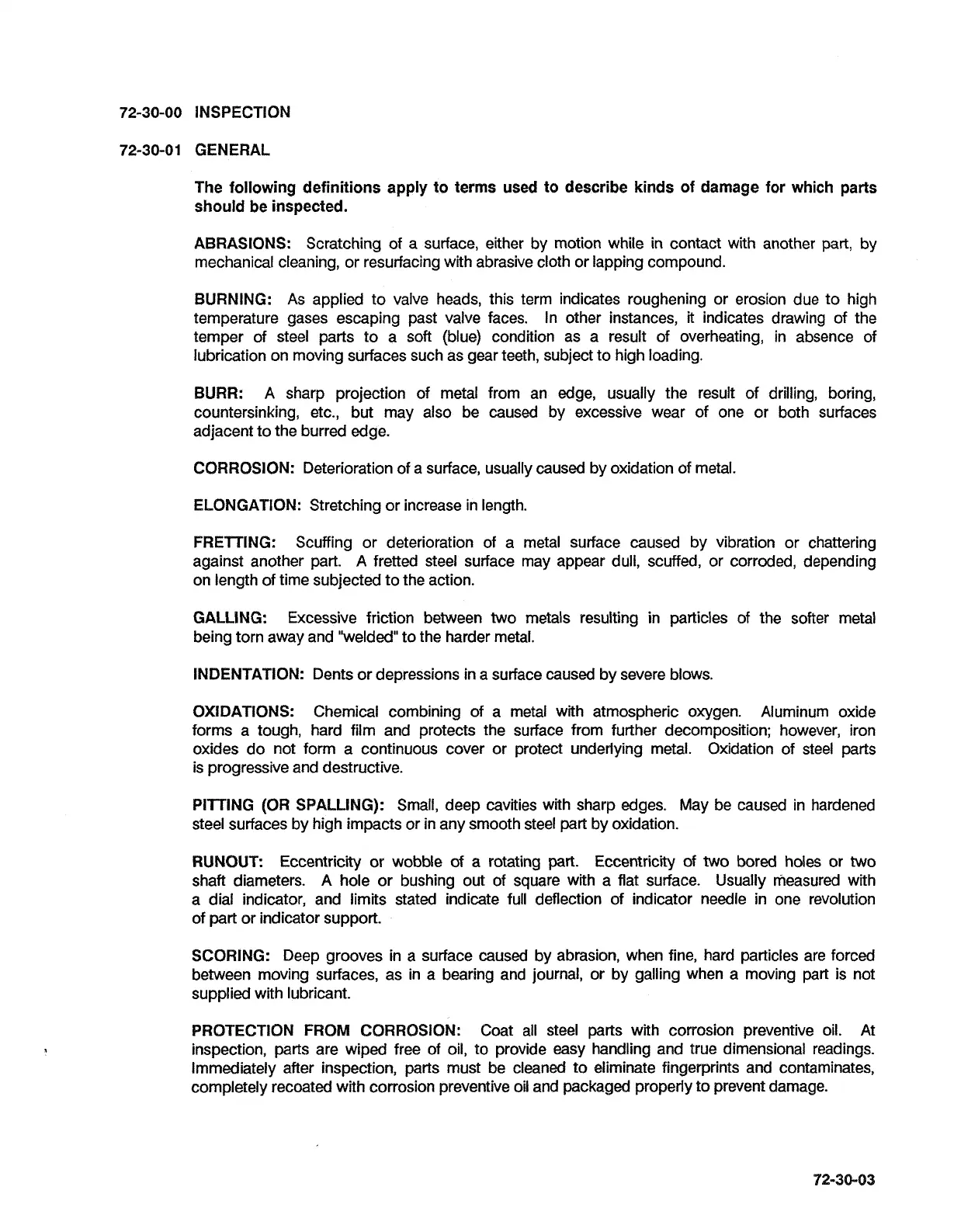72-30-00
INSPECTION
72-30-01
GENERAL
The following definitions apply to terms used to describe kinds of damage for which parts
should be inspected.
ABRASIONS: Scratching of a surface, either by motion while in contact with another
part,
by
mechanical cleaning, or resurfacing with abrasive cloth or lapping compound.
BURNING: As applied to valve heads, this term indicates roughening or erosion due to high
temperature gases escaping past valve faces.
In other instances,
it
indicates drawing of the
temper of steel parts to a soft (blue) condition as a result of overheating, in absence of
lubrication on moving surfaces such as gear teeth, subject to high loading.
BURR:
A sharp projection of metal from an edge,
usually the result of drilling, boring,
countersinking, etc., but may also be caused by excessive wear of one or both surfaces
adjacent to the burred edge.
CORROSION: Deterioration of a surface, usually caused by oxidation sf metal.
ELONGATION: Stretching or increase in length.
FRETTING:
Scuffing or deterioration of a metal surface caused by vibration or chattering
against another part.
A
fretted steel surface may appear dull, scuffed, or corroded, depending
on length of time subjected to the action.
GALLING: Excessive friction between two metals resulting in particles of the softer metal
being torn away and "welded" to the harder metal.
INDENTATION: Dents or depressions in a surface caused by severe blows.
OXIDATIONS: Chemical combining of a metal with atmospheric oxygen.
Aluminum oxide
forms a tough, hard film and protects the surface from further decomposition; however, iron
oxides do not form a continuous cover or protect underiying metal. Oxidation of steel parts
is progressive and destructive.
PITTING (OR
SPALLINIG): Small, deep cavities with sharp edges. May be caused in hardened
steel surfaces by high impacts or in any smooth steel part by oxidation.
RUNOUT: Eccentricity or wobble of a rotating part.
Eccentricity of two bored holes or two
shaft diameters.
A
hole or bushing out of square with a flat surface. Usually measured with
a dial indicator, and limits stated indicate full deflection of indicator needle in one revolution
of part
or indicator support.
SCORING: Deep grooves in
a
surface caused by abrasion, when fine, hard particles are forced
between moving surfaces, as in a bearing and journal, or by galling when a moving part is not
supplied with lubricant.
PROTECTION FROM CORROSION:
Coat all steel
parts with corrosion preventive oil. At
inspection,
parts are wiped free of oil, to provide easy handling and true dimensional readings.
Immediately after inspection, parts must be cleaned to
diminate fingerprints and contaminates,
completely
recoated with corrosion preventive oil and packaged property to prevent damage.

